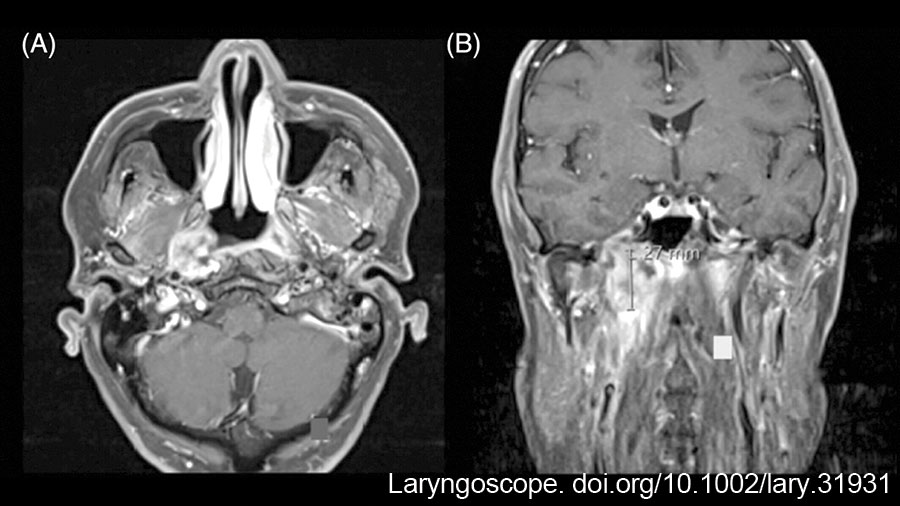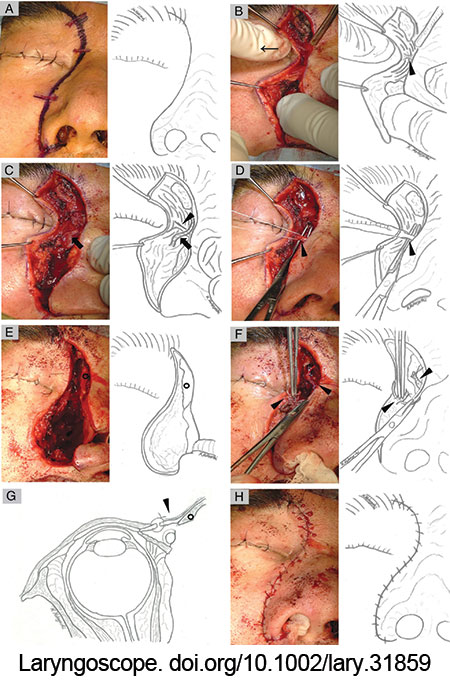This study presents a pioneering report on an endoscopic-assisted total maxillectomy that allows for en bloc resection without a facial skin incision.


This study presents a pioneering report on an endoscopic-assisted total maxillectomy that allows for en bloc resection without a facial skin incision.

The authors presented the surgical procedures of full endoscopic total parotidectomy followed by the sternocleidomastoid muscle flap transplantation via a short postauricular hairline incision and reported patient outcomes to evaluate the feasibility and efficacy of this novel approach.

This article assesses the efficacy of intralesional steroid treatment in preventing vocal fold scarring following vocal fold surgery using a rabbit model.

This article aimed to present the authors’ experiences with endoscopic-assisted transoral resection of APG tumor and to describe the surgical procedure involved.

Endoscopic nasopharyngectomy in the context of recurrent nasopharyngeal carcinoma may require reconstruction with strongly vascularized flaps. This is fundamental to address the volumetric deficit and prevent complications such as carotid blowout syndrome. The submental island flap is well suited for this purpose.

In this work, the authors present a computer vision model for automatic otologic drill motion analysis during mastoidectomy and detail how to implement a computer vision model for real-time use.

This study presents proven techniques and technical tips for MPL management in medial maxillectomy via a lateral rhinotomy.

The authors describe their current approach for flexible endoscopic management of Zenker’s diverticulum. This approach uses the latest techniques in flexible Zenker’s surgery, including submucosal division of the muscular common wall, partial mucosal wall division, and watertight closure.

This study aimed to report the authors’ experience with endoscopic neck dissection through a post-auricular hairline incision, followed by intraoral resection of oral cancer and free flap reconstruction.

This is a case report of an upper parapharyngeal abscess arising from the progression of a central skull base osteomyelitis in a patient with poorly controlled diabetes mellitus. It’s unusual for its presentation in an upper parapharyngeal location, involvement of the skull base, and poor response to medical treatment, hence requiring transnasal endoscopic surgical drainage to achieve definitive treatment.